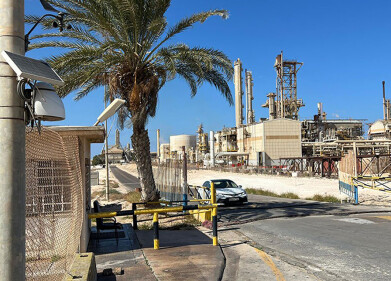Air Quality Monitoring
Air Quality and Climate Change - Explaining the Relationship
Sep 18 2021
For many people, the concepts of air quality and climate change might seem almost interchangeable. But while these two phenomena do share many similar characteristics, including the same origins, the same impacts and the same solutions much of the time, they are actually distinct ideas that differ from one another significantly.
Air quality refers to the presence of contaminants in the atmosphere which can negatively impact the health of humans, animals and plants. Meanwhile, climate change is the term given to the global changing of the Earth’s climate as a result of both natural and anthropogenic processes. Here’s a closer look at the relationship between the two, including where they cross over – and where they differ.
Common origins
Poor air quality and climate change are both symptoms of the current energy model we use in our daily lives. Whether it’s the fossil fuel power plants which supply electricity to our homes or the petrol and diesel we use to power our cars, our current methods of generating power generally create unwanted by-products.
For air pollution, these take the form of contaminants such as nitrogen oxides (NOx), sulphur oxides (SOx), particulate matter (PM) and tropospheric ozone (O3), among others. Meanwhile, the emission of large amounts of greenhouse gases can upset the environment, accelerating global warming and precipitate more intense and more frequent extreme weather events.
Common impacts
The biggest negative consequence of both air pollution and climate change is the same: death and destruction. Having said that, they achieve their ends in quite different ways. On the one hand, air pollutants can infiltrate the lungs (and even the bloodstream) of humans and animals and cause or exacerbate respiratory difficulties, leading to some seven million premature human deaths per year.
Meanwhile, the climatic chaos caused by climate change manifests itself in the shape of droughts, floods, hurricanes, tornadoes, earthquakes, heatwaves, forest fires and other extreme weather events. While it’s much more difficult to quantify this in terms of the amount of lives or biodiversity lost, it’s a huge burden upon our planet which, unless we act quickly, will soon become irreversible.
Common solutions
Fortunately, both problems can be solved via the same, simple solution. This involves quantifying and curbing our emission of the harmful gases and contaminants which cause each outcome. Understanding the size of the challenge is key to overcoming it, which is why multi-purpose air monitoring devices are so important. For more information on the latest developments in this field, please view the talk All-in-one ambient air monitoring – A single device monitoring 10 greenhouse gases and air pollutants simultaneously.
After amassing and assessing the data on our emissions habits, we must then look for ways to reduce our carbon footprint. This includes transitioning to cleaner forms of energy generation, employing carbon capture and storage technologies and amending our individual habits to consume less energy and produce less waste. Only in this way will we overcome the twin challenges of air pollution and climate change.
Digital Edition
AET 28.4 Oct/Nov 2024
November 2024
Gas Detection - Go from lagging to leading: why investment in gas detection makes sense Air Monitoring - Swirl and vortex meters will aid green hydrogen production - Beyond the Stack: Emi...
View all digital editions
Events
Jan 12 2025 Abu Dhabi, UAE
Jan 14 2025 Abu Dhabi, UAE
Jan 20 2025 San Diego, CA, USA
Carrefour des Gestions Locales de L'eau
Jan 22 2025 Rennes, France
Safety, Health & Wellbeing LIVE
Jan 22 2025 Manchester, UK



















